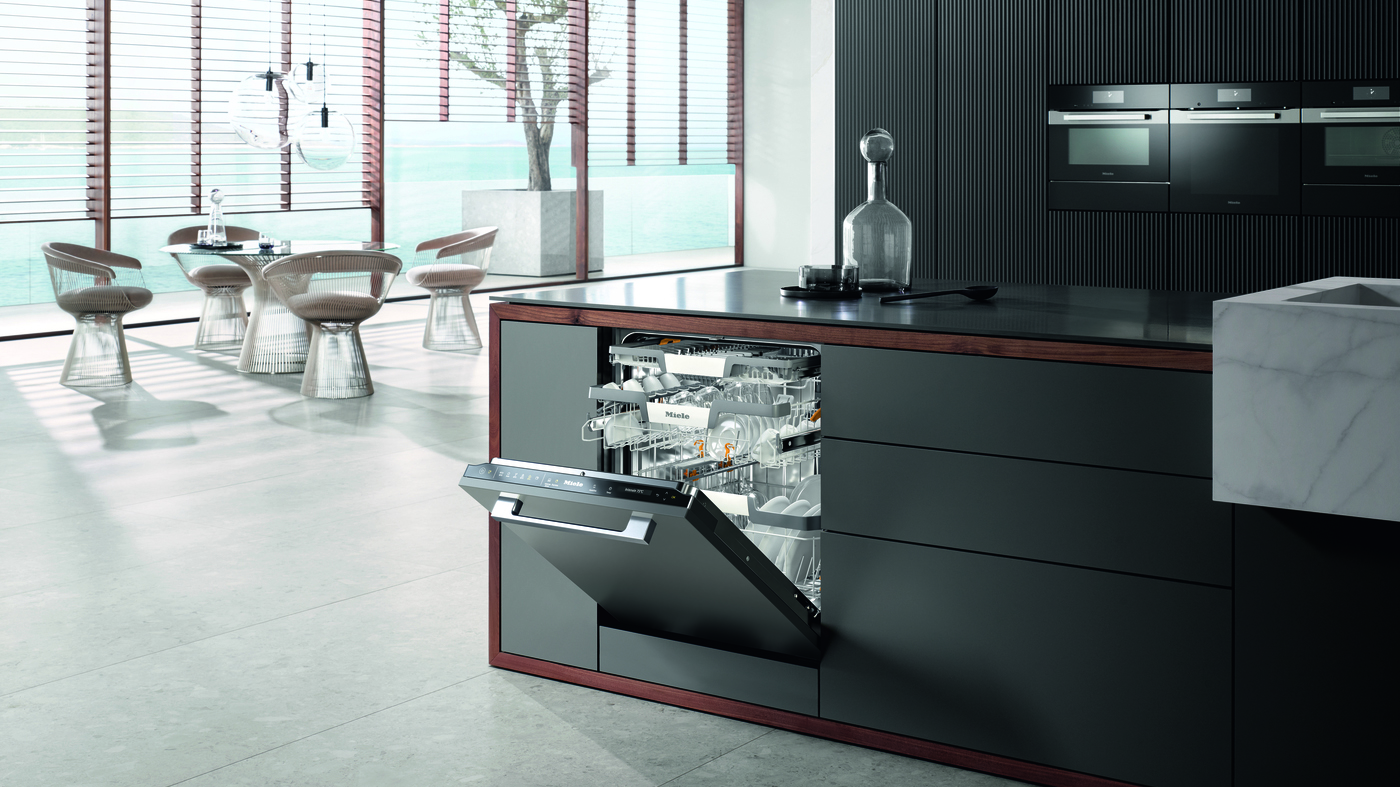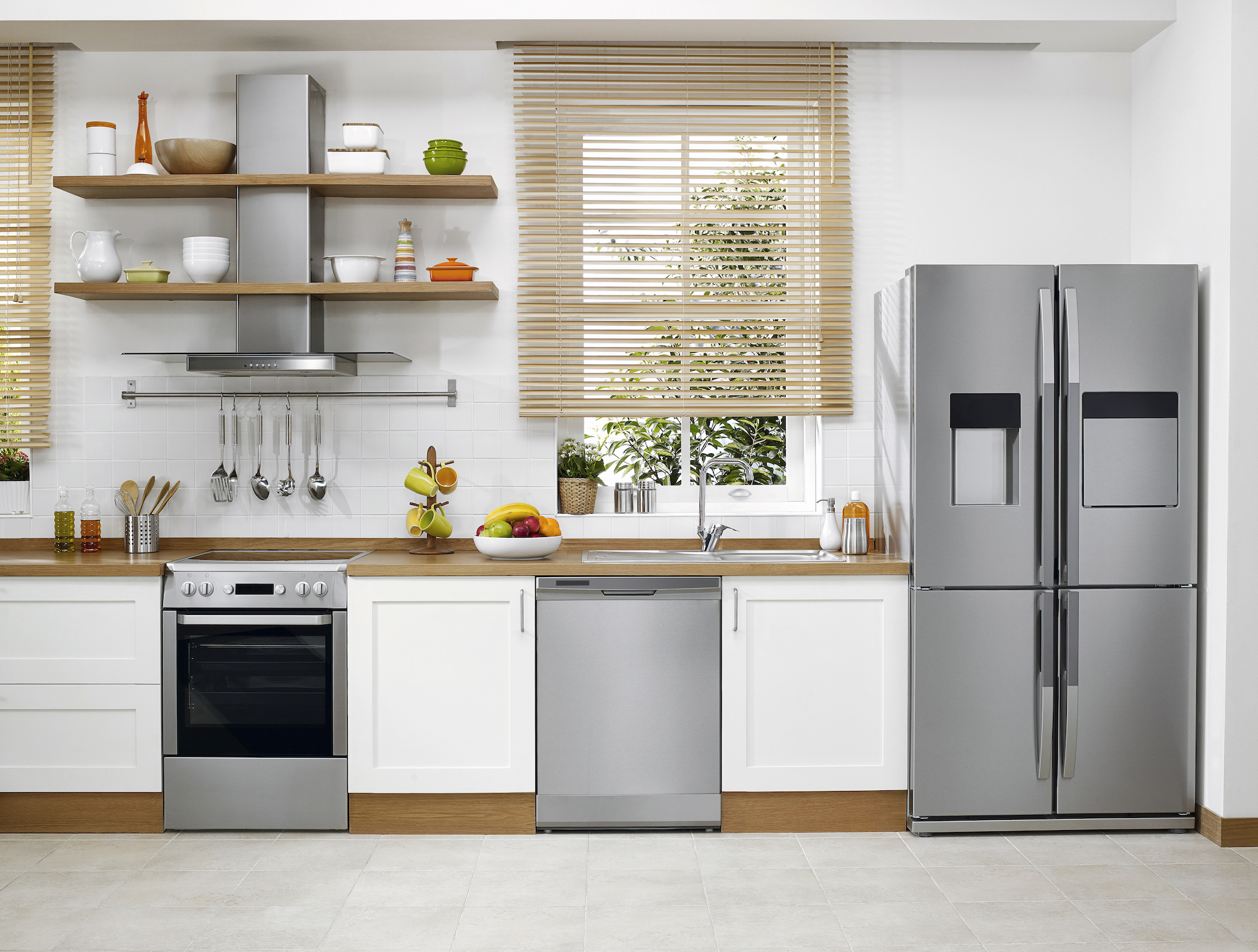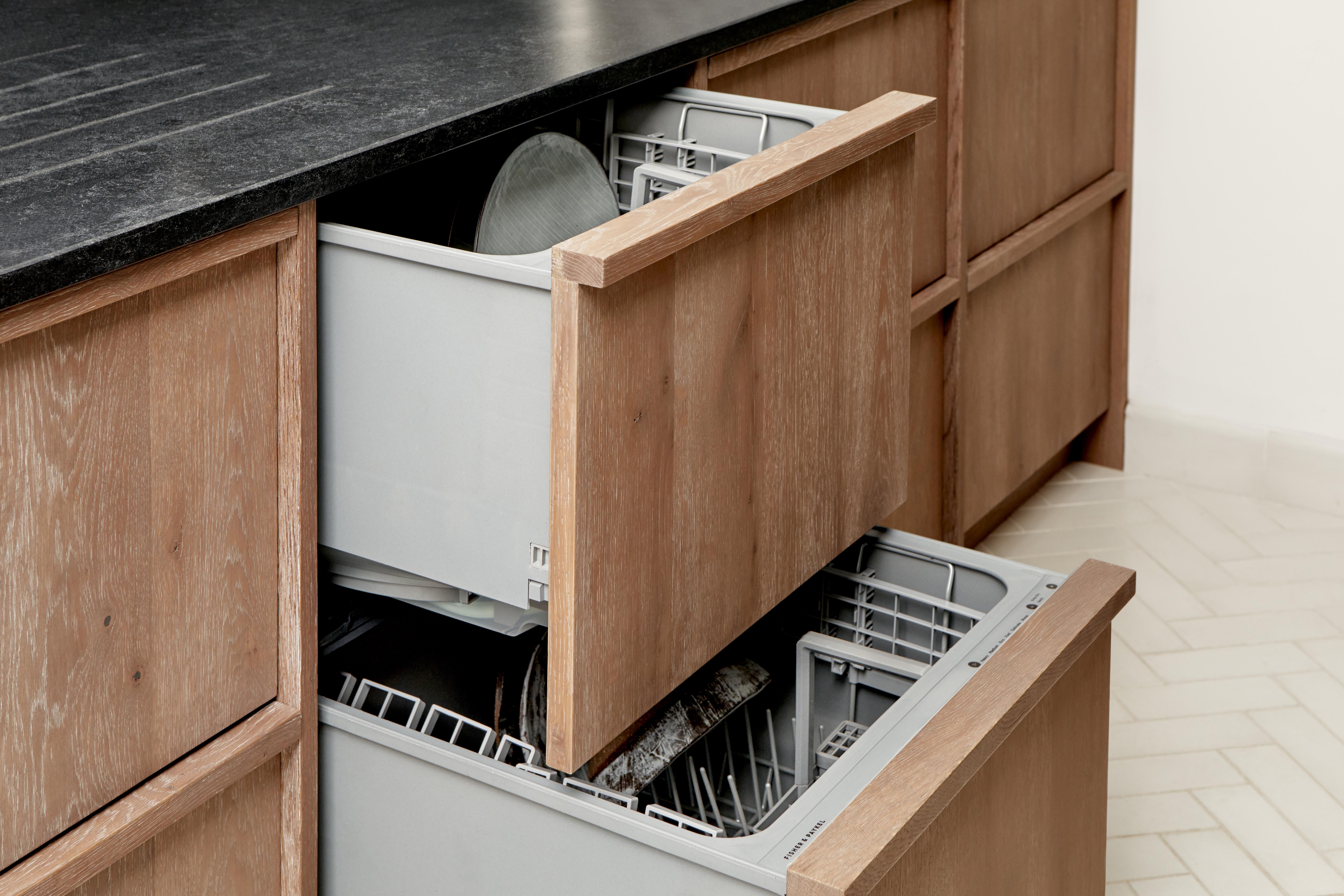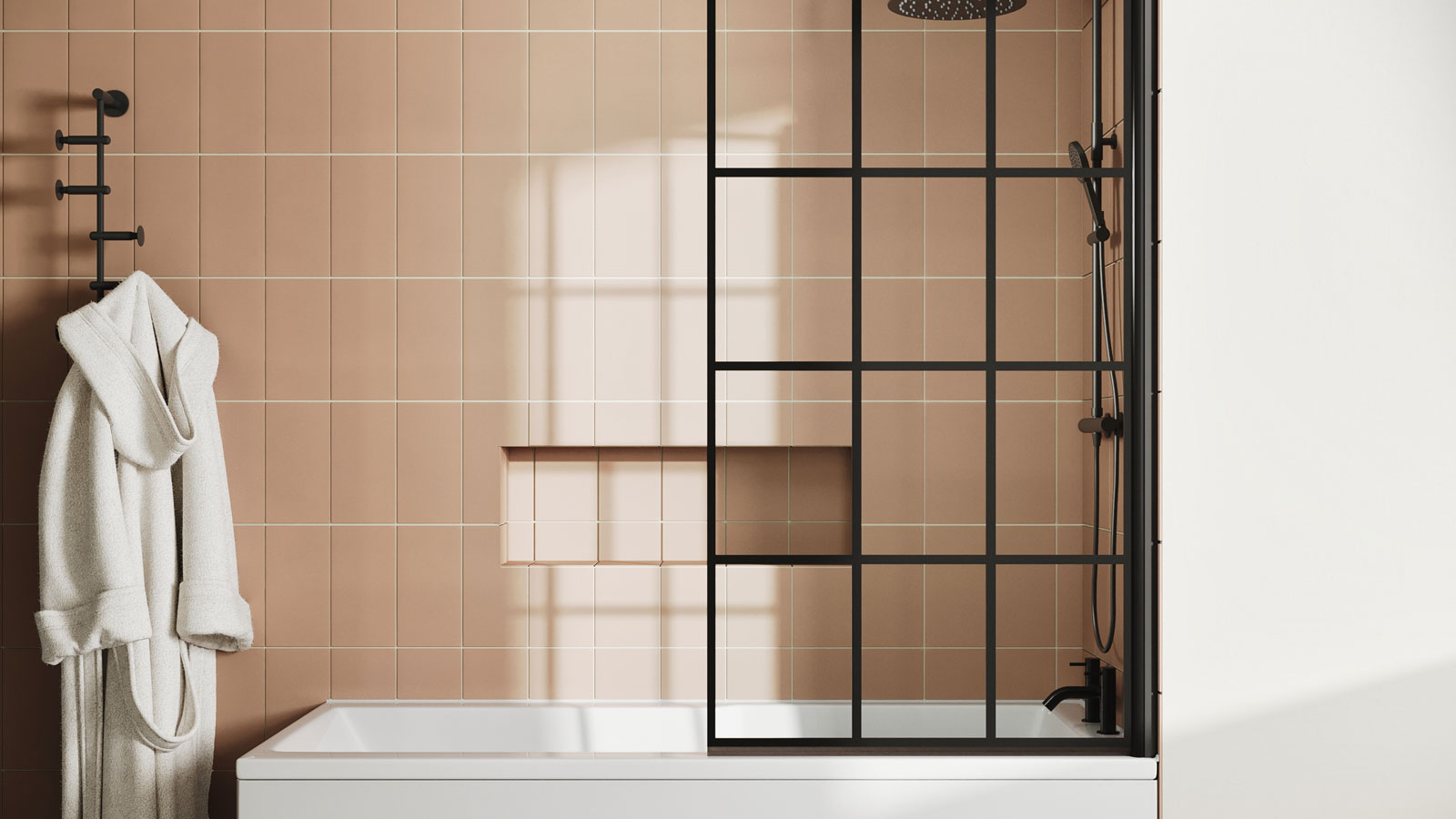Built-in vs freestanding dishwashers: What's the best option for your kitchen?
Find out the differences between built-in vs freestanding dishwashers, how to weigh up the pros and cons and choose which is right model for your kitchen

Weighing up built-in vs freestanding dishwashers will not just impact the functionality of your kitchen, but also the aesthetics. Doing your research before investing in this appliance will ensure you have chosen the best type for your budget and your lifestyle.
White goods appliances like fridges, dishwashers and washing machines are (hopefully) only bought every decade, so it pays to choose wisely while planning your kitchen and utility spaces.
Compare the two different types with our guide below, including energy saving tips, which will be best for your style your kitchen, with industry expert advice on the latest features which might make your decision easier.
What is the difference between built-in and freestanding dishwashers?
They key differences between built-in and freestanding dishwashers comes down to whether or not the appliance front is concealed and how the dishwasher is turned on.
"When planning a new kitchen, one of the first things to consider is the style you want and whether the appliances will either complement or contrast the cabinetry," advises Jo Jackson, market product manager at Fisher & Paykel. "Integrated appliances can be customised with a matching cabinet door to match a minimalist kitchen scheme, or if you are after a more contemporary design then stainless steel integrated appliances can be on show rather than hiding them away."
"Freestanding dishwashers are a versatile option, with models featuring hard-wearing laminate tops offering the choice of being used as worktop space. Since the appliance is not built-in, it can be easily relocated if preferred or simply re-installed in a new kitchen if you move home," adds Tom Hopper, kitchens manager at Miele GB.
"On the other hand, semi and fully integrated / built-in dishwashers can be matched to the cabinetry of your kitchen or concealed behind matching furniture, for a seamless design."
Bring your dream home to life with expert advice, how to guides and design inspiration. Sign up for our newsletter and get two free tickets to a Homebuilding & Renovating Show near you.
Freestanding dishwashers have their control panel on the front while built-in units are controlled using panels on the top of the door once opened.
Are freestanding dishwashers better?
One benefit of freestanding dishwashers is their affordability as compared to their generally pricier integrated/built-in counterparts. Their ease of installation means they can also be moved from house to house, if you're considering selling your home in the next few years, or replaced fairly easily.
This type of dishwasher is controlled using a button or touch control panel on the front of the door. From here you can generally see settings clearly and adjust temperatures, water consumption and special half-load washes. Opening mechanisms are usually pull down cup cut outs, but some designs might use bar handles.
Modern designs of freestanding dishwashers have also offered more contemporary and stylish finishes, like anthracite grey and stainless steel. Therefore, when planning a kitchen you can match a freestanding dishwasher to a similar fridge-freezer and stove without necessarily needing to use the same brands. This more relaxed style might suit country homes or more casual lifestyle better than a completely integrated kitchen.
However, freestanding dishwashers tend to be noisier than their integrated counterparts. And for those who don't like their appliances on show, integrated will always be the model of choice.

Is it worth getting an integrated dishwasher?
For those that are questioning what is an integrated dishwasher and if it is worth getting one, the answer comes down entirely to taste — do you mind having the dishwasher on view, or would you rather it be hidden from view?
"The idea of integrated appliances is the seamless look and feel with your kitchen furniture," explains Fisher & Paykel's Jo Jackson. If having a sleek and uniform look is important to your plans, integrated is the way to go — using a cabinet door of the same style as the rest of the kitchen means it's near impossible to identify when closed.
This can provide a higher-end look, although sleeker stainless steel freestanding models may also achieve this. Bear in mind too that there's comparatively more involved in installing a built-in dishwasher, so this can add to the cost.
"Many people think that because integrated appliances are harder to access, they will be harder to repair. If the best integrated dishwashers have been correctly installed then there should be no issue if a product needs to be repaired or replaced," adds Jo Jackson.
What features should I watch out for?
Both types of dishwasher will offer similar functions, such as different time settings, eco modes and half-load washes. However, there are a few things you should be aware of when purchasing a dishwasher.
"Most modern appliances have specialist hinges which allow doors to open with minimal gaping. The last thing you need with a beautiful new kitchen is a large gap around the appliances that collects dust and debris. Look for gaping between 3mm- 6mm for the best effect," advises Jo Jackson.
"Features such as automatic load recognition can also help you keep energy consumption down, automatically detecting the amount of crockery in the wash cabinet and adjusting the use of water and electricity accordingly," adds Miele's Tom Hopper.
"Additionally, eco programmes can ensure that less water is used and dishes are washed at lower temperatures, whilst delay start functions can instruct your machine to run during off-peak times when the lowest electricity tariff is available."
How much space do you need?
Both types of dishwasher are typically 60cm wide as standard. Both freestanding and built-in dishwashers also can come in slimline options – usually 45cm – offering a smaller capacity for smaller kitchens or households. Single drawer dishwashers are now also available.
"For smaller households, traditional full-size dishwashers are becoming less suitable as they either need to run less efficient half-load cycles or will only be run every two days by when the dirt is dried on the plates — and you might have run out of plates and cutlery! The single drawer is perfect for smaller families who may not need a full-sized dishwasher," adds Jo Jackson from Fisher & Paykel.

Do you need a plumber?
Freestanding dishwashers do not necessarily need a plumber but integrated dishwashers may require specialist installation. However, if you're planning a new kitchen, installation can easily be planned for whilst your kitchen fitter and plumber are on site.
What's more, most bespoke kitchen design and fit companies will include the installation of appliances within the price, so any type of dishwasher should be covered within this.
If you are installing a dishwasher yourself, Jo Jackson has the following tips: "When putting in an integrated appliance such as a dishwasher, you need to look at the installation manual. Most integrated appliances will be developed to be counter-depth and will allow space for the pipes for water and waste but bear in mind that most appliances will need to have a socket in the cupboard next to them."
Built-in vs freestanding dishwashers: Which is more energy efficient?
If how much a dishwasher costs to run is important to your decision, you'll be happy to hear that built-in and freestanding dishwashers use approximately the same amount of energy per cycle so there's isn't a lot of difference in it.
Generally, a C-rated dishwasher of either type will use an average of 0.75kWh. Based on the current price for electricity, 34p, a full wash will cost around 25p (not including water consumption).
"There is a lot to consider when looking for sustainable to run appliances but one of the first things you should look at is the energy labels to make sure the products are energy efficient," begins Fisher & Paykel's Jo Jackson.
"To live more sustainably, you should carefully consider how efficient the model is in terms of energy and water usage and calculate how much it will cost to operate. A more expensive product is worth the investment if you are ultimately spending less money to run it throughout its lifetime.
"For dishwashers, it is important to take into consideration the water usage per cycle. You can save a lot of water by investing in dishwashers with eco options, which minimise water and energy usage," she concludes.
Amy is an interiors and renovation journalist. She is the former Assistant Editor of Homebuilding & Renovating, where she worked between 2018 and 2023. She has also been an editor for Independent Advisor, where she looked after homes content, including topics such as solar panels.
She has an interest in sustainable building methods and always has her eye on the latest design ideas. Amy has also interviewed countless self builders, renovators and extenders about their experiences.
She has renovated a mid-century home, together with her partner, on a DIY basis, undertaking tasks from fitting a kitchen to laying flooring. She is currently embarking on an energy-efficient overhaul of a 1800s cottage in Somerset.

